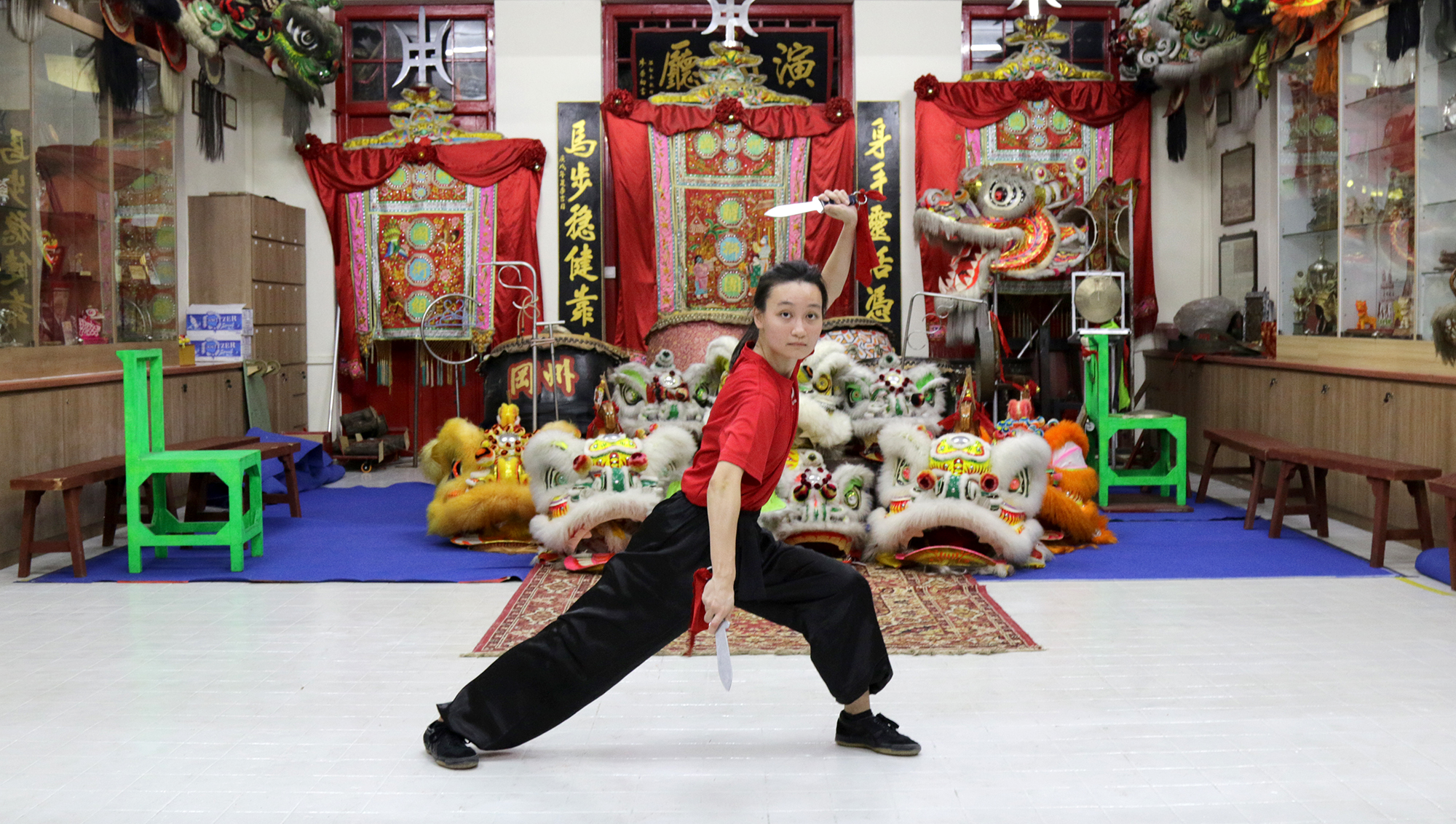It was 9pm on a Monday night when we visited the Kong Chow Wui Koon (KCWK) or Kong Chow Clan Association. Despite the late hour, the place was still buzzing with young and old.
The KCWK is one of Singapore's oldest clan associations and they were recently featured as part of the Singapore Heritage Festival 2017.
Founded in 1840 by Chinese immigrants from the Xinhui District in Guangdong, the association prides itself for its emphasis on Chinese cultural arts, and that night, we were going to visit the ladies who champion them.
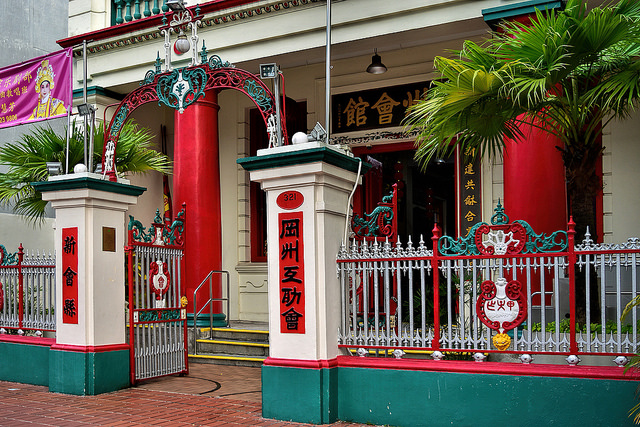 Image via Flickr user Choo Yut Shing. Shared under Creative Commons Licence 2.0.
Image via Flickr user Choo Yut Shing. Shared under Creative Commons Licence 2.0.
The association's three-storey Late-style shophouse headquarters fits right at home with the rest of the conserved specimens lining the streets of Chinatown. An intricate iron-wrought arch over the entrance courtyard pillars greets you as you enter.
Stepping into the main hall was like being transported into a period film set. One half expected to see a qipao-clad Tang Wei striding round the corner, amidst the red lanterns and imposing rosewood furniture.
We moved up to the second floor, where Patricia Ong, a Chinese opera singer with KCWK, was waiting for us patiently.
Becoming an opera star
Ong was going to demonstrate the Chinese opera makeup process for us and as she started her introduction, her hands moved deftly around her plastic boxes of face paint.
Ong has been performing Chinese opera with the association for 29 years. "We learned how to do our makeup and improve on it by watching other opera performances," said Ong.
Applying opera makeup was a long and tedious process, as Ong applied a white foundation followed by a reddish tint.
"I used to take two hours to finish my makeup. But with practice, it now only takes one hour," she said as she lined her eyes with black paint.
 Image by Joshua Lee.
Image by Joshua Lee.
Perhaps what was most intriguing was Ong's collection of hair pieces - each carefully made from her own real hair which she had collected over time. Ong carefully take out each hairpiece and slathered it with a rubber adhesive before applying it to her head.
Ong completed the look by attaching several jewelled flowers in her hair. According to her, different characters put on different hair accessories to indicate their status. A maiden has jewelled flowers while a princess or queen has a more elaborate headpiece.

Ong's transformation was nothing short of breathtaking. Her jewelled flowers glittered as she moved her head.
As we ended our session with Ong, a group of elderly ladies had gathered in front of a simple stage at the front of the room to rehearse their singing parts for an upcoming performance.
As the ladies started their singing, we moved upstairs to meet KCWK's 23-year-old wushu practitioner, Adeline Yeo.
Training to be a wushu expert
Despite the late hour, the petite Yeo was drenched in sweat having just concluded a practice session. It was quite evident that wushu (martial arts) is Yeo's passion.
"I joined (the association) when I was five or six. My uncle brought me here (Kong Chow Wui Koon), together with all my cousins, for daily group [training] sessions," she mused.
It was the start of a very long journey Yeo embarked on with the association. She would later go on to train weekly at the association, devoting two days a week to practise.
As if that wasn't enough, Yeo casually added at she also took wushu as a co-currricular activity (CCA) in school.
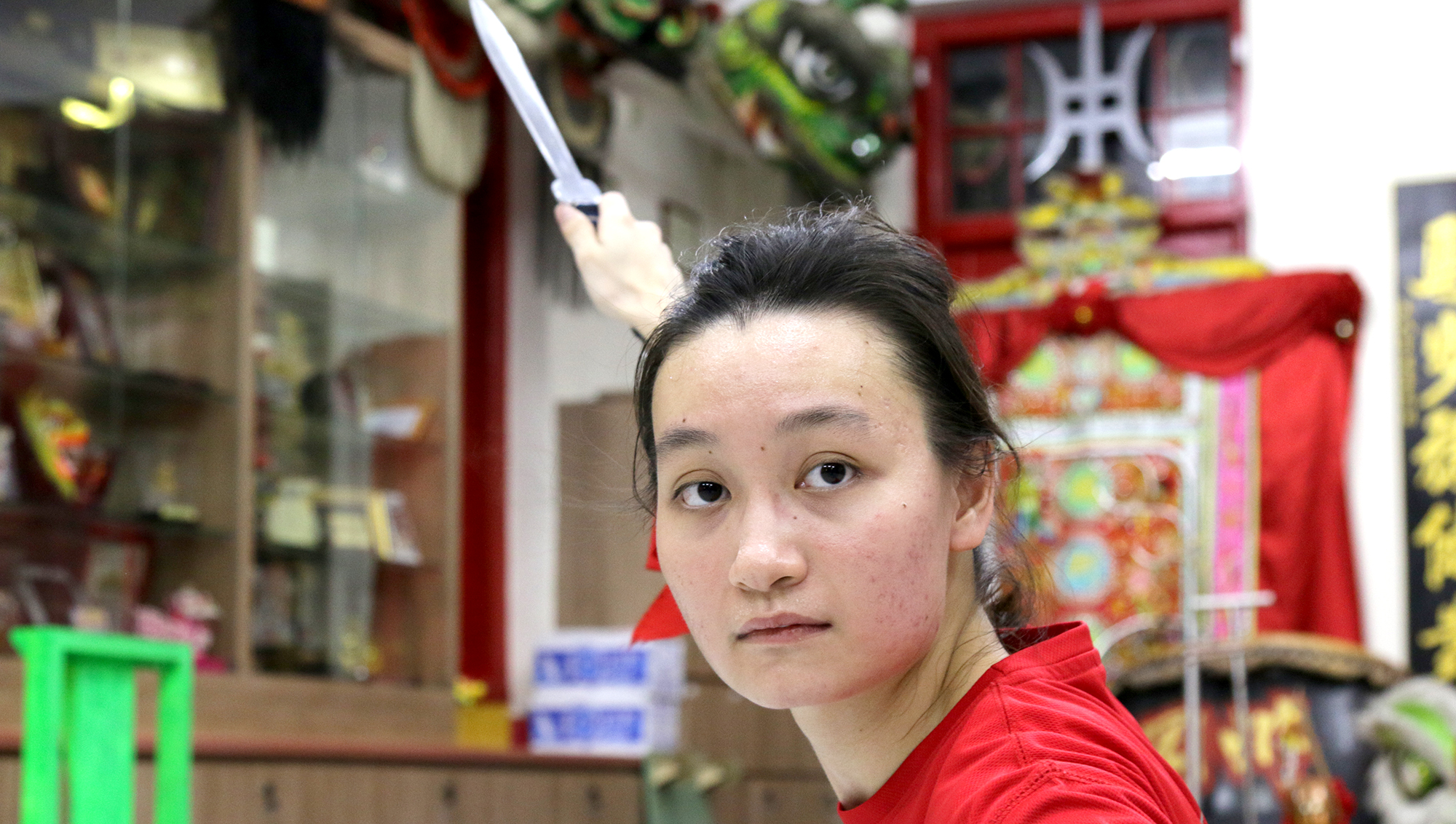 Image by Joshua Lee.
Image by Joshua Lee.
Long way to go
Despite her years of experience, the NTU Electrical and Electronics Engineering final year student doesn't think of herself as a wushu expert.
"There are a lot of things to learn from here," she quipped with shy smile. "It is a never-ending process; you have to keep improving yourself".
The KCWK specialises in the Hong Clan Fist (洪家拳) style of martial arts which originated in Kong Chow - an old name for a province in Guangdong, China.
At the same time, members of the wushu troupe at the association also get to learn other types of martial arts from visiting teachers from around the world.
On-screen, off-screen
Remember that iconic catfight between Zhang Ziyi and Michelle Yeoh in Crouching Tiger Hidden Dragon?
Or perhaps the fancy flights peppered through every other wuxia flick:
Yeo is quick to point out that traditional wushu is unlike what you find on the silver screen - Wushu in real-life does not have the visual gymnastics that make for beautiful films.
"I think many people often see the traditional one as 'boring'. there are not many jumps or kicks. Instead, it focuses on the stance," she explained.
Having said that, Yeo is optimistic about the use of wuxia films in generating more publicity about wushu among younger folks, citing Donny Yen as the face that launched a thousand Wing Chun lessons.
"For example, after Ip Man came out, people started [taking an interest in] Wing Chun. Having performances at more visible public places such as Orchard Road can also make wushu more accessible to youngsters."
The road to proficiency is paved with pain
Yeo's expertise in martial arts was evident. She brandished various weapons with ease and confidence throughout the shoot.
First it was the rope dart and then, a pair of daggers that moved fascinatingly (and, at at times, dangerously) close to her face.
However, her road to wushu proficiency was not easy, with training being 'very tedious'.
"You need at least five to six years to get into form and pick up the skill. It's not something you can achieve over months or overnight."
Apart from that, as with any other sport, training injury is not uncommon. "Yeah, we do suffer from injuries," Yeo says, "the most common being ligament tears caused by friction when we execute moves or land (on our feet) wrongly.
However, she is quick to add that 'safety always comes first' although that doesn't prevent 'bruises and sprains in the long term'.
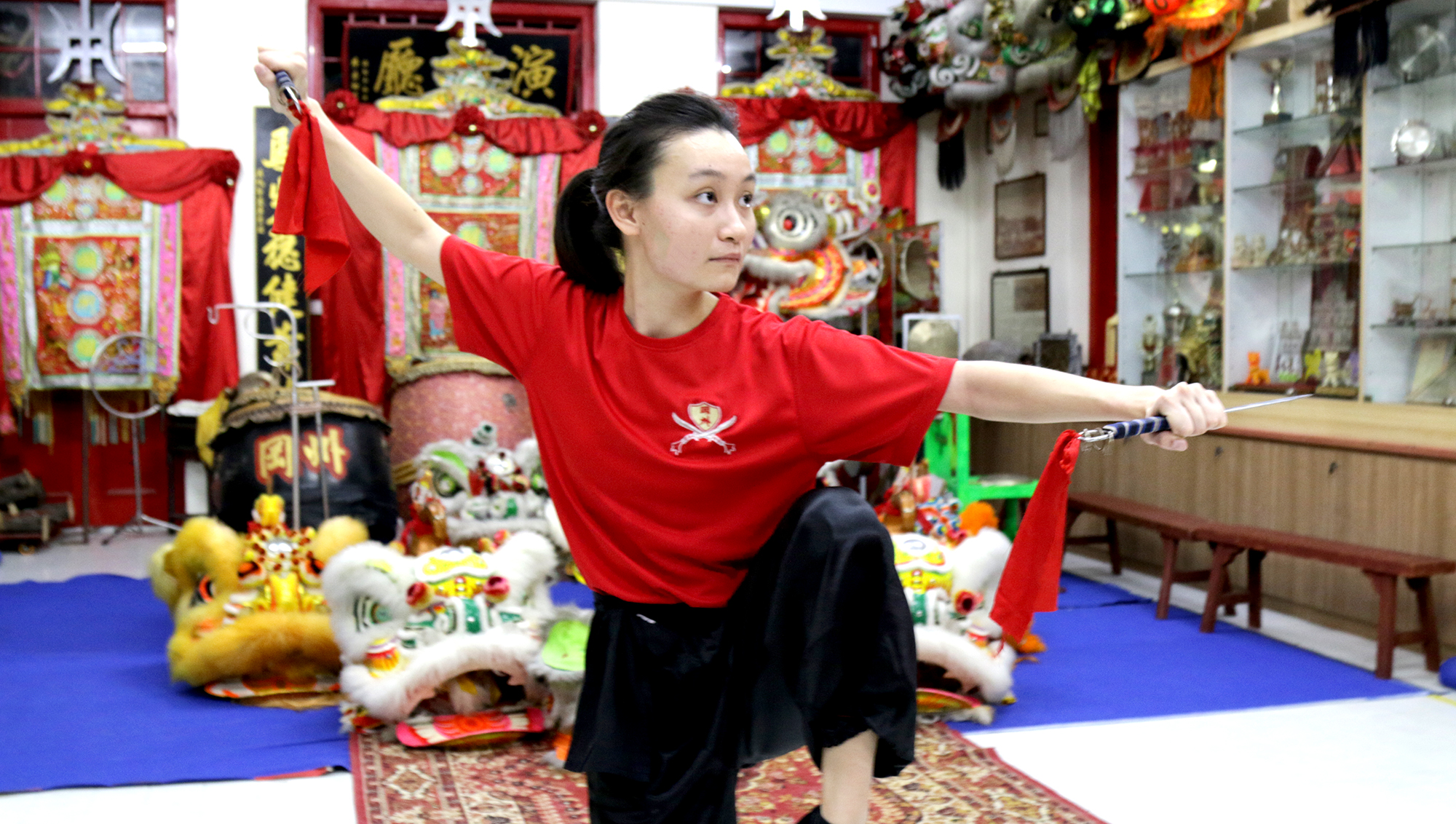 Image by Joshua Lee.
Image by Joshua Lee.
Home away from home
At the end of the day, when asked about one thing she enjoys as a wushu practitioner at KCWK, Yeo offers one answer - the camaraderie.
"I grew up here, with this group of friends so they are like family to me," she smiles. "We don't just practise on Fridays, but also travel overseas for competitions, and exchange programmes".
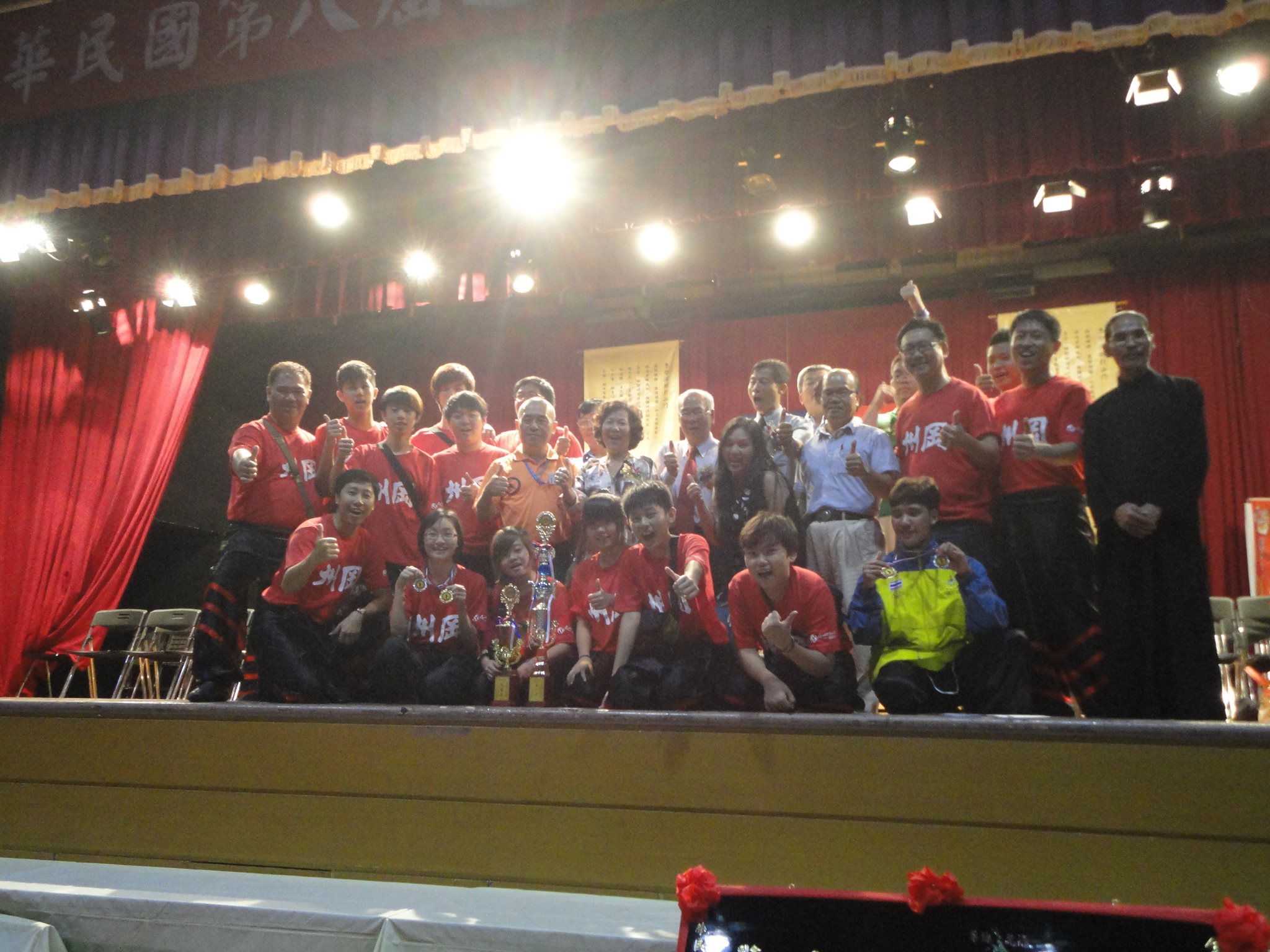 Kong Chow Wui Koon at a competition in Taiwan. Image via Facebook.
Kong Chow Wui Koon at a competition in Taiwan. Image via Facebook.
So what next?
We ended off the interview with a question on how long more the final year NTU undergraduate sees herself practising wushu.
"I'd like to continue for as long as I can, but participation might drop once I start working," she said with just the slightest hint of wistfulness.
 Image by Joshua Lee.
Image by Joshua Lee.
While the clan is open to adults to come practise wushu, participation rates for this group of adults tend to be lower and sporadic - owing to the busy work schedule that plagues many workers here.
That doesn't faze Yeo though, who sees wushu as a lifelong endeavour. "Recently we had some uncles who joined us, they were about 50-plus years-old," she quipped with a smile.
With that, we ended our tour of the KCWK, inspired by these wonder women who continue to champion cultural art.
Here are totally unrelated but equally interesting articles:
The Caveman Review: Masks your face can eat
Here are 14 moving images of people crying because they’re so happy they just can’t
Top photo by Joshua Lee.
If you like what you read, follow us on Facebook and Twitter to get the latest updates.
If you like what you read, follow us on Facebook, Instagram, Twitter and Telegram to get the latest updates.
